炔诺酮
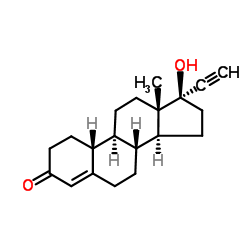
炔诺酮结构式

|
常用名 | 炔诺酮 | 英文名 | Norethindrone |
|---|---|---|---|---|
| CAS号 | 68-22-4 | 分子量 | 298.419 | |
| 密度 | 1.2±0.1 g/cm3 | 沸点 | 447.0±45.0 °C at 760 mmHg | |
| 分子式 | C20H26O2 | 熔点 | 205-206 °C(lit.) | |
| MSDS | 中文版 美版 | 闪点 | 190.5±21.3 °C | |
| 符号 |

GHS08 |
信号词 | Warning |
炔诺酮用途Norethindrone 是FDA批准用于治疗子宫内膜异位症,由异常激素水平引起的子宫出血症和继发性闭经的女性孕激素。 |
| 中文名 | 炔诺酮 |
|---|---|
| 英文名 | norethisterone |
| 中文别名 | 17α-乙炔基-17β-羟基-19-去甲-4-雄甾烯-3-酮 | 19诺塞睾甾酮 | 17α-乙炔基-19-去甲睾酮 | 4-19-去甲基雄烯二醇 | 去甲基脱氢羟孕酮 | 17-羟基-19-去甲-17α-孕甾-4-烯-20-炔基-3-酮 | 氯塞酮 | 19-去甲-17α-乙炔基-4-雄甾烯-17β-醇-3-酮 |
| 英文别名 | 更多 |
| 描述 | Norethindrone 是FDA批准用于治疗子宫内膜异位症,由异常激素水平引起的子宫出血症和继发性闭经的女性孕激素。 |
|---|---|
| 相关类别 | |
| 靶点 |
Progesterone Receptor[1] |
| 体内研究 | 醋酸炔诺酮是治疗症状性子宫内膜异位症的一种经济有效的替代品,副作用相对较轻。接受醋酸炔诺酮治疗的受试者获得痛经和非周期性骨盆疼痛缓解[1]。单用醋酸炔诺酮是治疗子宫内膜异位症所有阶段疼痛和出血的一种耐受性好、有效的选择。醋酸炔诺酮治疗后的出血评分与之前的激素治疗方案无关,所有患者的醋酸炔诺酮治疗后的疼痛评分都有所改善,但之前处方的促性腺激素释放激素激动剂加上补充组除外[2]。醋酸炔诺酮对实验动物的急性毒性较低,与人类的毒性缺乏一致。将醋酸炔诺酮以人类剂量的几倍单独给药于啮齿动物不会导致与治疗相关的死亡率、血液学改变、行为改变或器官病理学改变[3]。给药醋酸炔诺酮可显著且成比例地降低高碳水化合物饮食大鼠密度<1.006的血浆脂蛋白中甘油三酯、胆固醇和磷脂的浓度。醋酸炔诺酮(0.1 mM)也显著抑制了棕榈酸盐和甘油在喂养大鼠肝细胞甘油三酯中的结合[4]。 |
| 动物实验 | 大鼠:雌性Sprague-Dawley大鼠(200-210 g),其中6只作为对照,分别关在上午9:00至晚上9:00照明的动物室中。接受醋酸炔诺酮的7只大鼠中的每只均饲喂35μg/天,持续2周。水和高碳水化合物的大鼠食物可以随意饮用[4]。 |
| 参考文献 |
| 密度 | 1.2±0.1 g/cm3 |
|---|---|
| 沸点 | 447.0±45.0 °C at 760 mmHg |
| 熔点 | 205-206 °C(lit.) |
| 分子式 | C20H26O2 |
| 分子量 | 298.419 |
| 闪点 | 190.5±21.3 °C |
| 精确质量 | 298.193268 |
| PSA | 37.30000 |
| LogP | 3.38 |
| 外观性状 | 灰白色至淡黄色固体 |
| 蒸汽压 | 0.0±2.5 mmHg at 25°C |
| 折射率 | 1.577 |
| 储存条件 | 本品应密封于阴凉干燥处避光保存。 |
| 稳定性 | 具有黄体酮样的孕激素,作用较炔孕酮强4倍,且抑制排卵作用较黄体酮强,还有弱的雄激素和雌激素活性。 |
| 水溶解性 | chloroform: ≥50 mg/mL, clear, colorless |
| 更多 | 1. 性状:白色结晶粉末。无臭微苦 2. 密度(g/mL,25/4℃):不确定 3. 相对蒸汽密度(g/mL,空气=1):不确定 4. 熔点(ºC):205-206 (lit.) 5. 沸点(ºC,常压):不确定 6. 沸点(ºC, 5.2kPa):不确定 7. 折射率:不确定 8. 闪点(ºC):不确定 9. 比旋光度(º):-31.7(氯仿中) 10. 自燃点或引燃温度(ºC):不确定11. 蒸气压(kPa,25ºC):不确定 12. 饱和蒸气压(kPa,60ºC):不确定 13. 燃烧热(KJ/mol):不确定 14. 临界温度(ºC):不确定 15. 临界压力(KPa):不确定 16. 油水(辛醇/水)分配系数的对数值:不确定 17. 爆炸上限(%,V/V):不确定 18. 爆炸下限(%,V/V):不确定 19. 溶解性:不溶于水,微溶于乙醇,略溶于丙酮,溶于氯仿 |
| 符号 |

GHS08 |
|---|---|
| 信号词 | Warning |
| 危害声明 | H351 |
| 警示性声明 | P281 |
| 个人防护装备 | Eyeshields;full-face particle respirator type N100 (US);Gloves;respirator cartridge type N100 (US);type P1 (EN143) respirator filter;type P3 (EN 143) respirator cartridges |
| 危害码 (欧洲) | Xn |
| 风险声明 (欧洲) | R40 |
| 安全声明 (欧洲) | S22-S36/37/39-S45 |
| 危险品运输编码 | 2811.0 |
| WGK德国 | 3 |
| RTECS号 | RC8975000 |
| 海关编码 | 2937290090 |
| 炔诺酮上游产品 9 | |
|---|---|
| 炔诺酮下游产品 7 | |
1.可由醋酸妊娠烯醇酮合成
2.制法:
于装有蒸馏装置的反应瓶中,加入氢氧化钾15g,甲苯120mL,异丁醇200mL,通入氮气,加热共沸脱水,直至将水脱尽。加入100mL四氢呋喃,控制30℃左右通入乙炔气体,25℃保温反应6h(乙炔吸收体积200倍)。冷却至0℃,继续通乙炔100倍。加入4-雄甾烯-19-去甲基-3,17-二酮(2)10g(0.037mol)溶于60mL四氢呋喃的溶液,于5℃以下反应12h,同时不断通入乙炔气体。反应结束后,以30%的硫酸中和至PH1~2,控制反温度不超过40℃。减压蒸出四氢呋喃至固体析出时,进行水蒸汽蒸馏,以除去甲苯。冷却至25℃以下,抽滤,滤饼用水洗涤至中性,干燥,得粗品炔诺酮(1)。粗品用1.5倍95%的乙醇洗涤一次,1倍70%的乙醇洗涤一次,再用15倍的95%的乙醇重结晶,活性炭脱色。过滤,滤液回收乙醇,冷却、析晶,过滤、干燥,得精品炔诺酮(1),mp201~208℃,收率93%。
| 海关编码 | 2937290090 |
|---|
|
Cheminformatics analysis of assertions mined from literature that describe drug-induced liver injury in different species.
Chem. Res. Toxicol. 23 , 171-83, (2010) Drug-induced liver injury is one of the main causes of drug attrition. The ability to predict the liver effects of drug candidates from their chemical structures is critical to help guide experimental... |
|
|
Translating clinical findings into knowledge in drug safety evaluation--drug induced liver injury prediction system (DILIps).
J. Sci. Ind. Res. 65(10) , 808, (2006) Drug-induced liver injury (DILI) is a significant concern in drug development due to the poor concordance between preclinical and clinical findings of liver toxicity. We hypothesized that the DILI typ... |
|
|
Developing structure-activity relationships for the prediction of hepatotoxicity.
Chem. Res. Toxicol. 23 , 1215-22, (2010) Drug-induced liver injury is a major issue of concern and has led to the withdrawal of a significant number of marketed drugs. An understanding of structure-activity relationships (SARs) of chemicals ... |
| Mini-Pe |
| Noriday |
| Ethynylnortestosterone |
| Utovlan |
| sc4640 |
| Anovule |
| estr-4-en-3-one, 17-ethynyl-17-hydroxy-, (17b)- |
| MFCD00067596 |
| (17a)-17-Hydroxy-19-norpregn-4-en-20-yn-3-one |
| 19-Nor-17a-ethynyl-17b-hydroxy-4-androsten-3-one |
| 19-nor-17α-Ethynylandrosten-17β-ol-3-one |
| Menzol |
| ENT |
| (8R,9S,10R,13S,14S,17R)-17-ethynyl-17-hydroxy-13-methyl-1,2,6,7,8,9,10,11,12,13,14,15,16,17-tetradecahydro-3H-cyclopenta[a]phenanthren-3-one |
| 17α-Ethynyl-17β-hydroxyestr-4-en-3-one |
| 19-nor-17α-Ethynyl-17β-hydroxy-4-androsten-3-one |
| Norethindrone |
| Primolut N |
| (17b)-17-ethynyl-17-hydroxyestr-4-en-3-one |
| 19-Nortestosterone, 17-ethynyl- |
| Ethinylnortestosterone |
| Norfor |
| 17a-Ethynyl-19-nortestosterone |
| (17α)-17-Hydroxy-19-norpregn-4-en-20-yn-3-one |
| 19-Nor-17α-ethynyltestosterone |
| 19-Norpregn-4-en-20-yn-3-one, 17-hydroxy-, (17α)- |
| Estr-4-en-3-one, 17α-ethynyl-17-hydroxy- |
| Norgestin |
| 17-Hydroxy-19-nor-17α-pregn-4-en-20-yn-3-one |
| 19-Nor-17a-ethynyltestosterone |
| Estr-4-en-3-one, 17-ethynyl-17-hydroxy-, (17β)- |
| EINECS 200-681-6 |
| (8R,9S,10R,13S,14S,17R)-17-Ethinyl-17-hydroxy-13-methyl-1,2,6,7,8,9,10,11,12,13,14,15,16,17-tetradecahydro-3H-cyclopenta[a]phenanthren-3-on |
| 17α-Ethynyl-17-hydroxy-4-estren-3-one |
| 19-Nor-17-ethinyl testosterone |
| 19-Nor-17α-pregn-4-en-20-yn-3-one, 17-hydroxy- |
| Triella |
| 19-Nor-17a-ethynylandrosten-17b-ol-3-one |
| 17α-Ethynyl-19-nortestosterone |
| 17α-Ethynyl-17β-hydroxy-19-norandrost-4-en-3-one |
| Norpregneninolone |
| Norethindrone (USP) |
| norethisterone |
| (8R,9S,10R,13S,14S,17R)-17-éthynyl-17-hydroxy-13-méthyl-1,2,6,7,8,9,10,11,12,13,14,15,16,17-tétradécahydro-3H-cyclopenta[a]phénanthrén-3-one |
| 17β-Hydroxy-19-norpregn-4-en-20-yn-3-one |
| Gestest |
| NET |

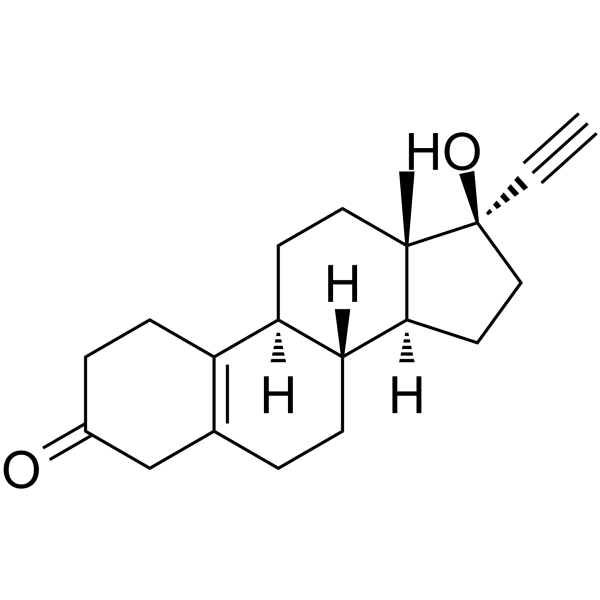 CAS号68-23-5
CAS号68-23-5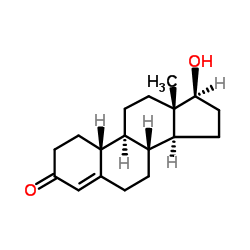 CAS号434-22-0
CAS号434-22-0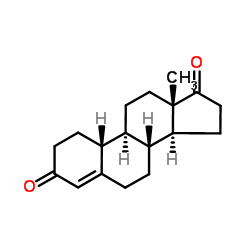 CAS号734-32-7
CAS号734-32-7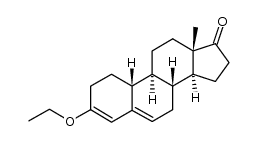 CAS号2863-88-9
CAS号2863-88-9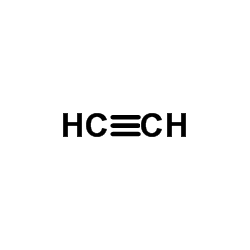 CAS号74-86-2
CAS号74-86-2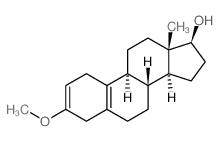 CAS号1091-93-6
CAS号1091-93-6 CAS号75863-04-6
CAS号75863-04-6 CAS号1624-62-0
CAS号1624-62-0 CAS号17976-32-8
CAS号17976-32-8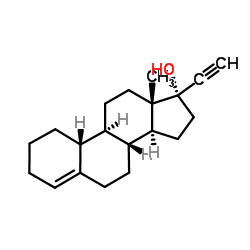 CAS号52-76-6
CAS号52-76-6 CAS号52-78-8
CAS号52-78-8 CAS号38002-18-5
CAS号38002-18-5 CAS号67696-78-0
CAS号67696-78-0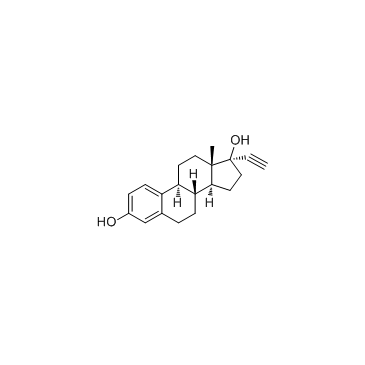 CAS号57-63-6
CAS号57-63-6 CAS号51-98-9
CAS号51-98-9

